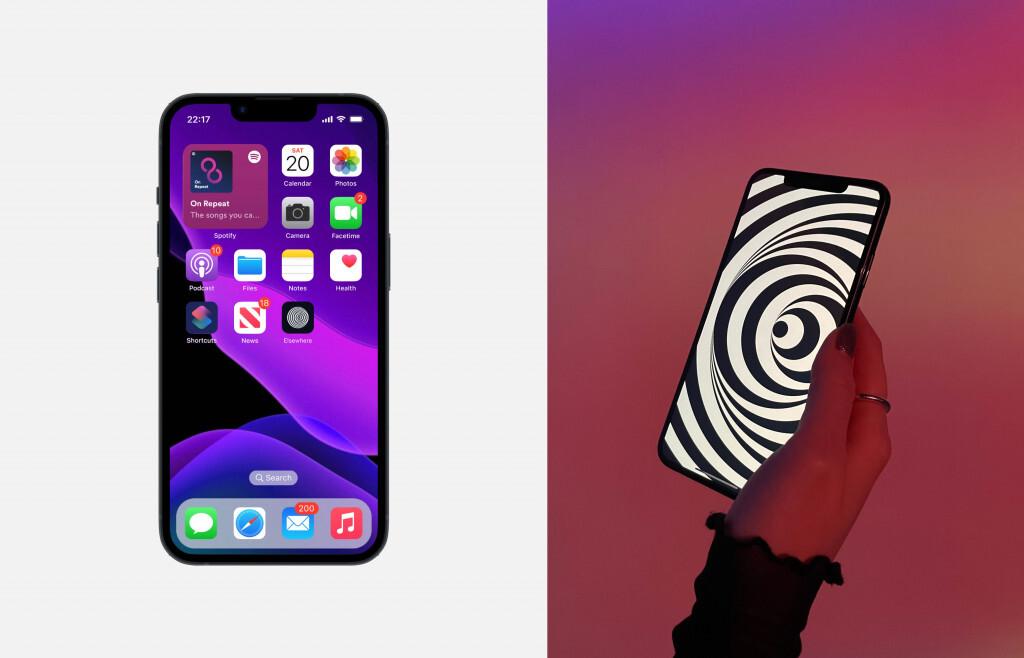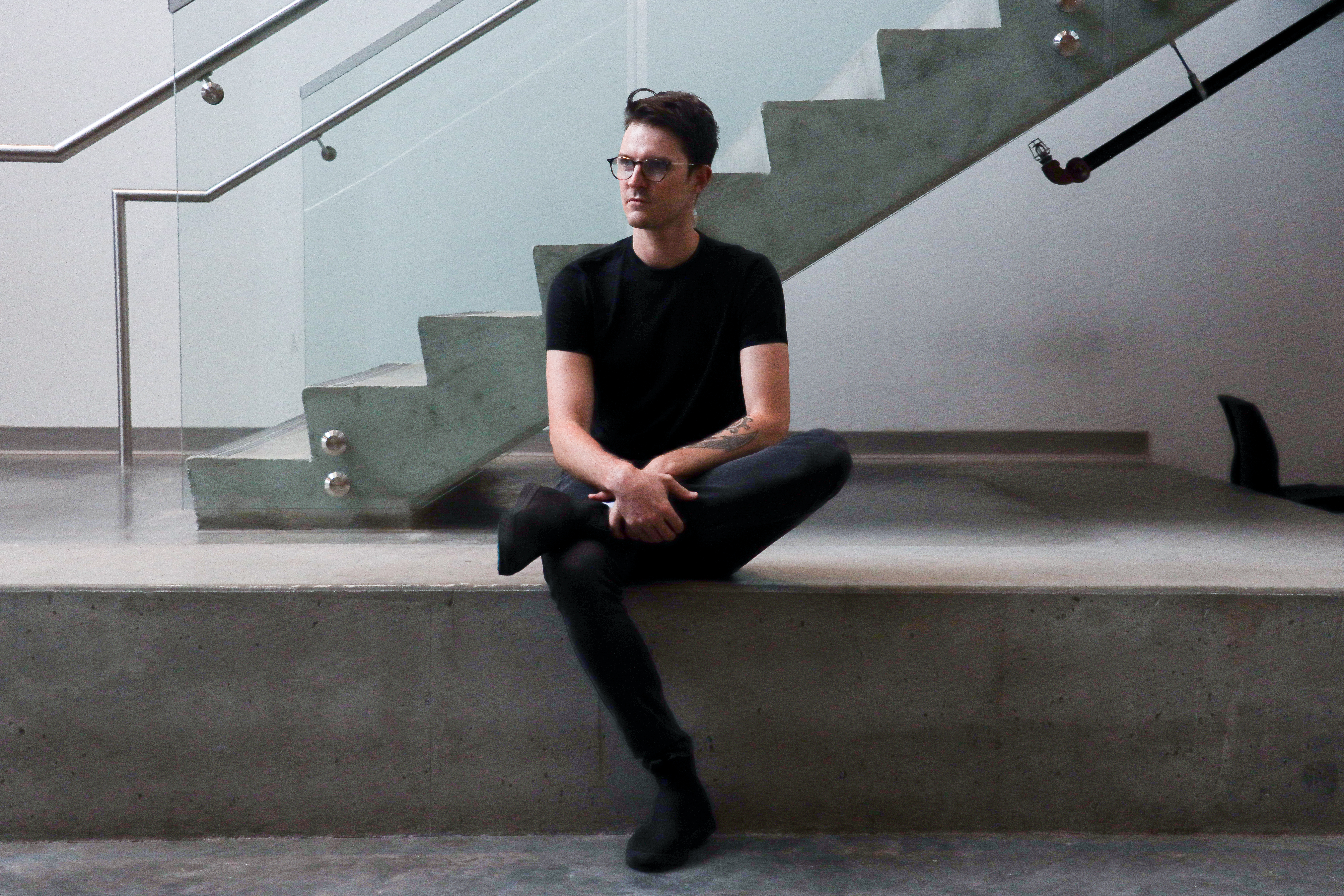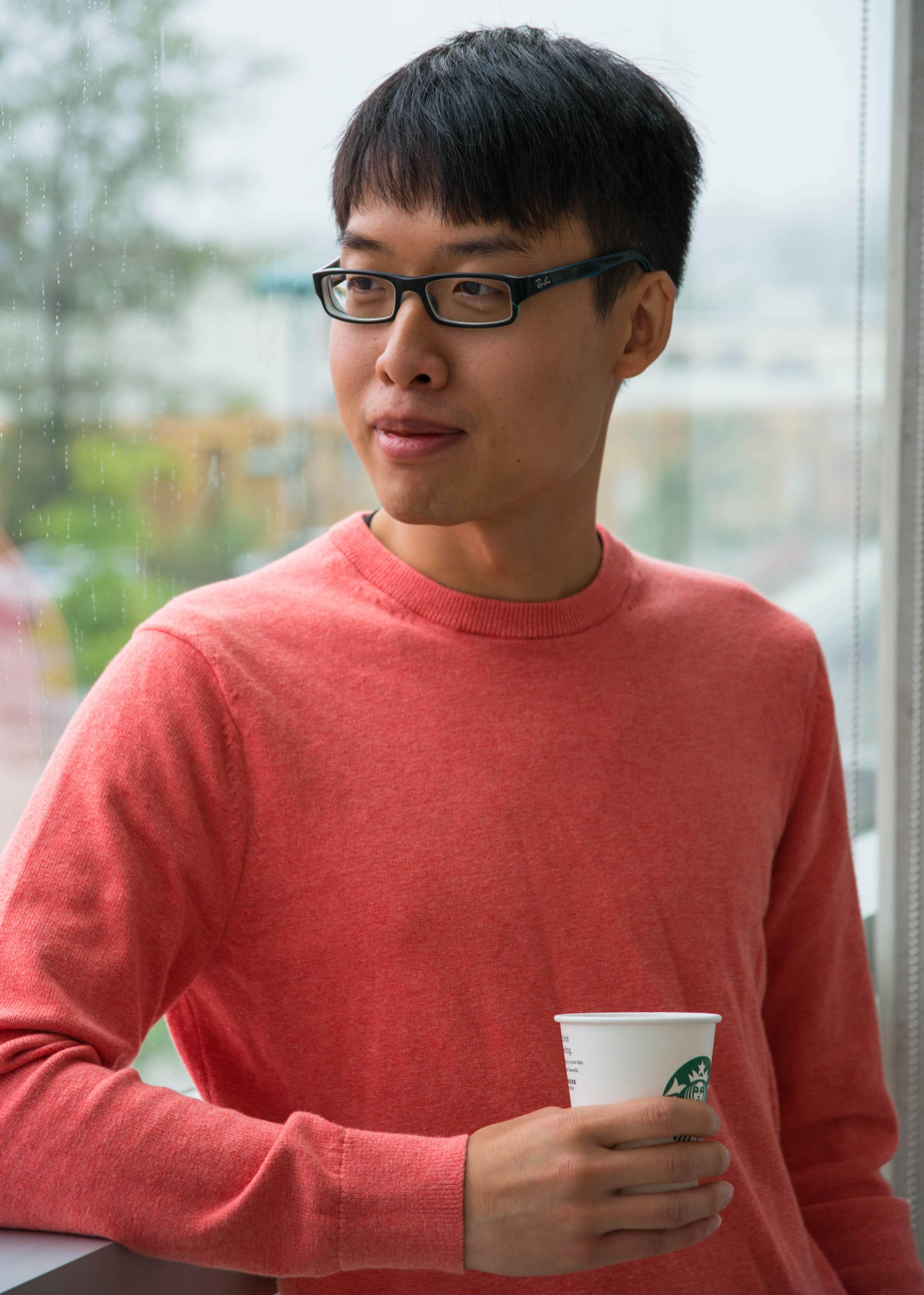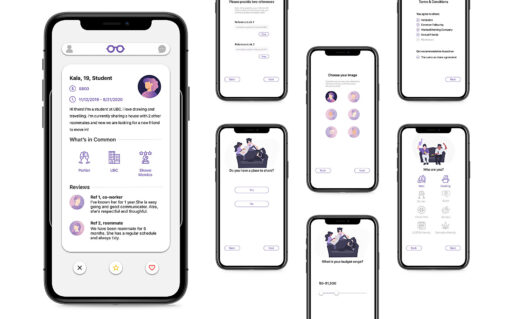Alina Danilyuk Wins UX Design Award in Berlin

Alina’s project Elsewhere with Apple is a speculative iPhone app that gently brings users out of endless scrolling and back into the present. (Image courtesy Alina Danilyuk)
Posted on
The product designer and UX Design Certificate alum won Public Choice Award for her project Elsewhere with Apple.
A thesis project by designer Alina Danilyuk recently won the Public Choice Award at the prestigious UX Design Awards in Berlin, Germany.
Alina was recognized for her project Elsewhere with Apple, which was created during her studies at the Ontario College of Art and Design (OCAD) University following her graduation from Emily Carr University of Art + Design’s (ECU) User Experience (UX) Design Certificate program.
“I am just grateful and honoured,” Alina says from her home in Toronto. “At first, I didn’t believe it because I was competing against designers from so many countries and it was my first global competition. But I’m glad the project I dedicated so much time to got noticed.”
In addition to exposure on an international stage, the recognition brought opportunities for networking and will see Alina speak on her project during a public info session on June 26.

Alina Danilyuk. (Photo courtesy Alina Danilyuk)
Elsewhere with Apple is a speculative iPhone app that gently brings users out of endless scrolling and back into the present without framing their phone as the enemy.
“The project is based on the idea that we’re so consumed by technology, especially our cell phones, that we’re missing out on something in our lives,” Alina says. “But technology is here to stay. Nobody’s going to throw away their phones, and I don’t want to make the phone into a bad guy. I want to make the phone friendlier so you can still live life to the fullest but not get lost in the algorithms.”
Alina designed the app to recognize when a user has entered what she refers to as “digital liminality.” She describes this state as “being between physical presence and fully online — an in-between space.”
When Elsewhere with Apple senses behaviours that indicate digital liminality, it prompts users to begin a four-level process of resurfacing. The first one-minute stage involves breathing, the second producing a sound and the third making eye contact.
“I’m just grounding them a little bit in their own presence, in their own output,” Alina says.
A contextual question breaks the liminality and brings users back. The experience concludes with a reflection, where users can take a photo, video, voice note or write an observation.
“Not only are you taking a break from scrolling, you come out with creative ideas because you spent a few minutes with your own thoughts, which is rare nowadays,” she adds.
The more one uses the app, the better it recognizes when users become lost in their screens. Participation is always optional, she adds. When the Elsewhere with Apple prompt arises, it can be ignored by simply shaking the phone.

When Elsewhere with Apple senses behaviours that indicate digital liminality, it prompts users to begin a four-level process of resurfacing. (Image courtesy Alina Danilyuk)
Alina, who has also studied graphic design, UX design, wearable tech and advertising, says ECU’s UX Design Certificate provided crucial skills in her development as a designer.
“I cannot recommend this program enough,” she says. “I’ve been very intentional in terms of my academic journey, and I knew I needed to learn UX research and other skills people in the industry have. I needed a solid program, and I found Emily Carr. The program helped expand my network beyond Ontario and gave me way more than I expected. It helped me transition into moving forward with my undergrad.”
Alina is now on the hunt for a design job and hopes to attend grad school one day.
Visit Alina’s website to learn more about her work.
Visit ECU online to learn more about the UX Design Certificate program.





